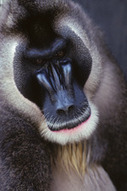Goldfish have been subjected to over 1,000 y of intensive domestication and selective breeding. In this report, scientists describe a high-quality goldfish genome (2n = 100), anchoring 95.75% of contigs into 50 pseudochromosomes. Comparative genomics enabled them to disentangle the two subgenomes that resulted from an ancient hybridization event. Resequencing 185 representative goldfish variants and 16 wild crucian carp revealed the origin of goldfish and identified genomic regions that have been shaped by selective sweeps linked to its domestication.
This comprehensive collection of goldfish varieties enabled scientists to associate genetic variations with a number of well-known anatomical features, including features that distinguish traditional goldfish clades. Additionally, they were able to identify a tyrosine-protein kinase receptor as a candidate causal gene for the first well-known case of Mendelian inheritance in goldfish—the transparent mutant.
The goldfish genome and diversity data offer unique resources to make goldfish a promising model for functional genomics, as well as domestication.
Read the full article at: www.pnas.org
Via Dr. Stefan Gruenwald



 Your new post is loading...
Your new post is loading...












